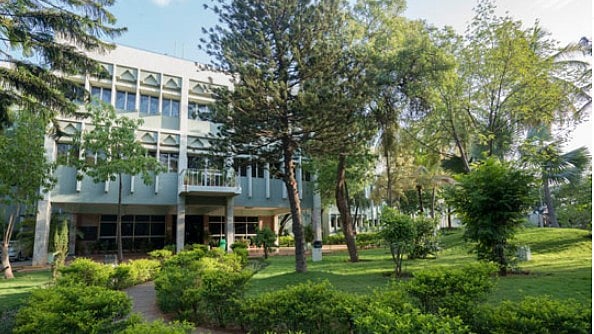
CCMB's Habsiguda campus
Credit: CCMB
Hyderabad: A genetic study conducted by researchers at the Centre for Cellular and Molecular Biology (CCMB) in Hyderabad has revealed that the Indian Sindhi community that settled along India’s west coast has a closer genetic affinity to the Burusho people of Pakistan than to the Pakistani Sindhis.
This distinction is marked by an additional East/Southeast Asian genetic component in the Indian Sindhis.
The Sindhi population on the west coast, primarily settled around Thane in Maharashtra, derives its genetic ancestry not directly from Pakistani Sindhis but from groups related to the Burusho in Pakistan.
Admixture modeling suggested that the Indian Sindhis’ genetic mixing with an East/Southeast Asian source occurred approximately 40–50 generations ago, explaining their unique genetic profile today.
India’s west coast is home to a diverse array of human populations. This expansive region, stretching between the Arabian Sea and the Western Ghats, has witnessed various migrations over centuries, involving West Eurasian groups such as the Portuguese, Middle Easterners, Jews, Parsees, and Christian missionaries.
While genetic studies have extensively examined populations like Parsees, Jews, and Catholics, the origins and genetic relationships of many southwestern coastal groups remain largely unexplored.
Among these comparatively small communities are the Indian Sindhis residing on the Konkan coast of Maharashtra. Although their migration from the Sindh region of present-day Pakistan has been ongoing for centuries, their population surged significantly during the post-independence partition of India.
Despite the numerous genetic studies on Pakistani Sindhis, little genetic data existed for the Sindhis living on India’s west coast, where they are socio-culturally distinct.
This gap was addressed for the first time by Dr Kumarasamy Thangaraj, CSIR Bhatnagar Fellow at CCMB, and his colleague Dr Lomous Kumar. They examined the common ancestry, local assimilation, and migration history of the west coast Sindhi population, publishing their findings in the international journal Human Genomics.
The study utilized data from 6 lakh DNA markers analyzed through advanced statistical and analytical methods.
“We found that the Sindhi population on the west coast of India has unique genetic makeup, which is different from Pakistani Sindhis. They show genetic affinities toward the Burusho or Hazara-like group from Pakistan as well as recent genetic assimilation with local populations such as the Konkani," Dr. Thangaraj explained. He added that the presence of the East Asian genetic component in Indian Sindhis likely resulted from minor admixtures, which could have occurred either directly through Mongolian migrations or via interactions with Burusho and Hazara-like groups in present-day Pakistan.
The Burusho and Hazara populations, with their Mongoloid features, reside in Pakistan’s northern regions. Dr. Lomous Kumar, a postdoctoral researcher at the DST-Birbal Sahni Institute of Palaeosciences in Lucknow and co-author of the study, noted, “Our genetic analysis also uncovered a small, unique East Asian genetic component among Indian Sindhis, which could date back to the Iron Age or later migrations, possibly linked to the Mongols.”
Dr. Vinay K. Nandicoori, Director of CCMB, emphasised that “these findings conclusively demonstrate the demographic and population shifts that have shaped western India through multiple migration wavessome dating back to the Iron Age or Middle Ages, and others as recent as post-independence.”